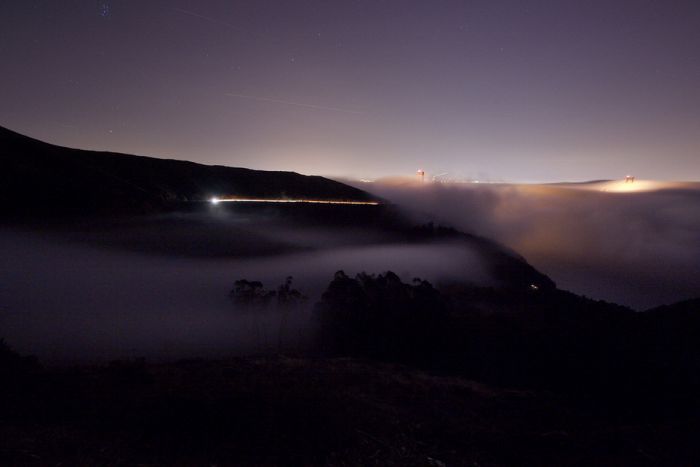|
|
San Francisco At Night, California, United States
|
There were 376,942 housing units at an average density of 1,625.5 per square mile (627.6/km²), of which 123,646 (35.8%) were owner-occupied, and 222,165 (64.2%) were occupied by renters. The homeowner vacancy rate was 2.3%; the rental vacancy rate was 5.4%. 327,985 people (40.7% of the population) lived in owner-occupied housing units and 452,986 people (56.3%) lived in rental housing units.
The California Department of Finance estimated the population at 856,095, as of January 1, 2010. With over 17,000 people per square mile, San Francisco is the second-most densely populated major American city (among cities greater than 200,000 population). San Francisco is the traditional focal point of the San Francisco Bay Area and forms part of the San Francisco-Oakland-Fremont Metropolitan Statistical Area and the greater San Jose-San Francisco-Oakland Combined Statistical Area (CSA) whose population is over seven million, making it the fifth largest in the United States as of the 2000 Census.
San Francisco has a minority-majority population, as non-Hispanic whites comprise less than half of the population, down from 92.5% in 1940. According to the 2010 Census, Asians of any nationality make up 33.3% of the population with those of Chinese ethnicity constituting the largest single ethnic group in San Francisco at 21.4% of the population; the other Asian groups are Filipinos (4.5%), Vietnamese (1.6%), Japanese (1.3%), Asian Indians (1.2%), Koreans (1.2%), Thais (0.3%), Burmese (0.2%), Cambodians (0.2%), and both Indonesians and Laotians make up less than 0.1% of the city's population. The Pacific Islander population is 0.4%, with about half of them being of Samoan descent. Hispanics of any race make up 15.0% of the population, mainly people of Mexican (7.4%), Salvadoran (2.0%), and other Central American descent (2.2%). San Francisco's African American population has declined in recent decades, from 13.4% in 1970 to 6.1%. The current percentage of African Americans in San Francisco is similar to that of the state of California; conversely, the city's percentage of Hispanic residents is less than half of that of the state. Native Californians form a relatively small percentage of the city's population: only 37.7% of its residents were born in California, while 25.2% were born in a different U.S. state. More than a third of city residents (35.6%) were born outside the United States.
According to the 2005 American Community Survey, San Francisco has the highest percentage of gay and lesbian individuals of any of the 50 largest U.S. cities, at 15.4%. San Francisco also has the highest percentage of same-sex households of any American county, with the Bay Area having a higher concentration than any other metropolitan area.
|
|









